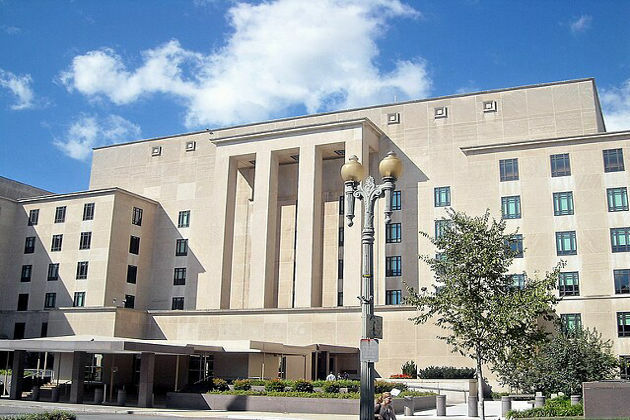Move FM Global News

Diplomats, lawmakers slam mass layoffs at US State Department
Jul 15, 2025WASHINGTON, D.C.: The U.S. State Department dismissed over 1,300 employees on July 11, as part of a sweeping reorganization initiated by the Trump administration — a move that has sparked fierce criticism from diplomats, lawmakers, and foreign policy experts who warn of lasting damage to American global influence.
According to a senior department official, 1,107 civil servants and 246 foreign service officers received formal notices stating that their positions were being abolished. The notices, obtained by the Associated Press, informed employees that they would lose access to State Department facilities and digital systems by 5 p.m. that day.
Outside the department’s Washington headquarters, the atmosphere was one of protest and mourning. Colleagues, former ambassadors, and members of Congress gathered in the summer heat, holding signs such as “Thank you to America’s diplomats” and “We all deserve better.” Many described the event as a gutting of a vital institution.
Anne Bodine, a retired diplomat who served in Iraq and Afghanistan, remarked, “Foreign service officers take an oath just like the military. This is no way to treat those who served their country under the principle of ‘America First.'”
While the Trump administration hailed the layoffs as part of a necessary streamlining effort, critics argue the cuts are dangerously short-sighted. Former Secretary of State Antony Blinken expressed support for the affected staff, writing on X: “Thinking today of the men and women of the State Department — Foreign Service and Civil Service. Their dedication to serving the national interest and the American people is second to none.”
The layoffs follow the administration’s broader efforts to shrink the federal government. This includes dissolving the U.S. Agency for International Development (USAID), which was absorbed into the State Department after steep funding cuts. The U.S. Institute of Peace (USIP), a congressionally funded think tank, also began notifying its 300 employees of termination, the second such instance in its history.
These actions were facilitated by a recent Supreme Court ruling that allowed the layoffs to proceed, even as legal challenges continue. A May notification to Congress revealed that the State Department aimed to cut 18% of its 18,700 domestic staff, citing overlapping functions and an intent to restructure outdated bureaus.
Senator Marco Rubio, a vocal proponent of the overhaul, defended the plan by stating, “We’re eliminating positions, not people.” However, internal memos show that many foreign service officers will be placed on 120 days of administrative leave before their terminations, while most civil servants face a 60-day notice period.
As staff packed up, applause echoed through the building and across the street, where protesters greeted them with hugs and placards shaped like gravestones labeled “democracy,” “diplomacy,” and “human rights.” Senator Andy Kim, a Democrat from New Jersey and a former State Department civilian adviser in Afghanistan, said, “It’s heartbreaking to see people in tears. All they wanted was to serve their country.”
Veteran diplomats like Robert Blake, who served under both Bush and Obama, voiced outrage. “These people are being fired not for performance, but politics,” he said. Gordon Duguid, a 31-year foreign service veteran, was blunt: “They don’t want expertise; they want obedience. That’s a disaster waiting to happen.”
The American Foreign Service Association (AFSA) condemned the move, calling it “a catastrophic blow to national interests” at a time of global instability. Paper signs placed anonymously in bathrooms and common areas urged those remaining to “resist fascism.”
The cuts hit hardest in offices dealing with refugee resettlement, human rights, and democracy promotion — all areas the administration believes are ideologically misaligned with its priorities. Jessica Bradley Rushing, a member of the Afghan Relocation Effort, was among those laid off twice — first placed on leave in March, then formally dismissed last week. “I never even anticipated that I could be at risk for that because I’m already on administrative leave,” she said.
The reorganization will impact more than 300 offices and bureaus, signaling a seismic shift in how America engages with the world — and who gets to represent it.


